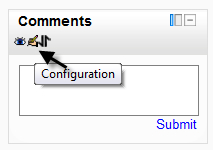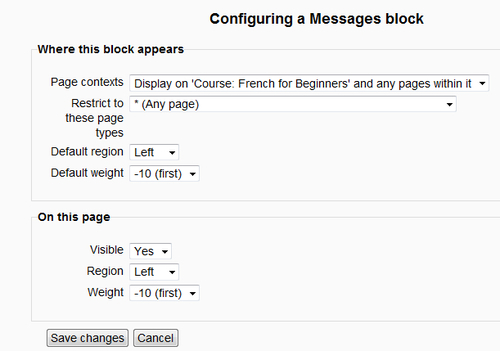With his editing turned on, Stuart can configure, move, or hide the Comments block but he cannot delete it as it was set up by the admin of the category.

However, he can easily add (and subsequently delete) his preferred blocks to his course as teachers have always have been able to in Moodle. What is different in Moodle 2.0 is that these blocks can be displayed on all pages of the course and/or privately in the teacher's course admin pages too.
Stuart wants to set up the messaging block so that students can message each other and himself whatever activity they happen to be doing at the time. Here's how he does it:
With the editing turned on, select the messaging block from the add block drop-down menu.
Click the configuration (hand/pen) icon and set up the block as shown in the next screenshot:

Page contexts: The drop down offered him the following options:

He chose to have the messaging block appear on all pages in the course.
Restrict to these page types...



